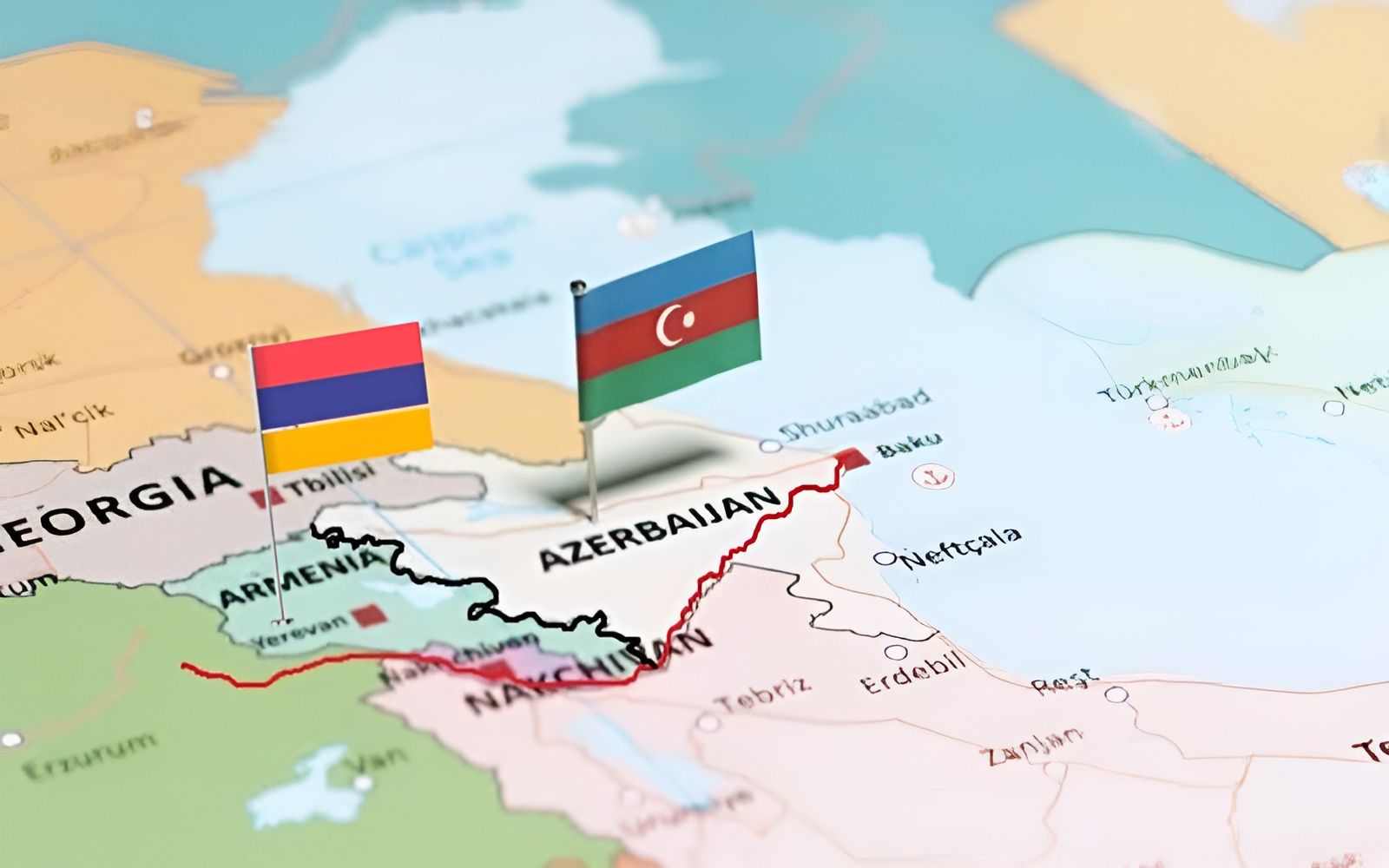How Azerbaijan's open transit to Armenia benefits South Caucasus economy?

For decades, Armenia has faced economic isolation, trapped by closed borders and limited access to international markets because of its stubborn stance in foreign policy. But a recent decision by Azerbaijan to open its territory for transit cargo is changing that narrative, offering Armenia a path toward new opportunities and signaling a real step toward peace.
President Ilham Aliyev confirmed the removal of all transit restrictions during a joint press statement with Kazakh President Kassym-Jomart Tokayev on October 21, 2025, highlighting the economic and strategic significance of the move.
Armenian Prime Minister Nikol Pashinyan also welcomed the decision at the V Tbilisi Silk Road Forum, describing it as positive and critical for restoring trust in the region and developing economic relations.
Naturally, the progress has sparked a flurry of reactions. Perhaps most intriguing is the response from Moscow, which has drawn considerable attention from analysts and policymakers alike.
“Azerbaijan’s decision to open its territory for transit cargo to Armenia is a sign that Baku and Yerevan are serious about moving towards peace,” Russian expert Mikhail Belyayev stated, commenting on the landmark development.
According to Belyayev, the move carries significant economic implications: “This decision by Azerbaijan is of great importance in terms of increasing both bilateral and multilateral trade turnover. For Armenia, which has been blockaded by its neighbors for more than thirty years due to the Garabagh conflict, new opportunities are emerging. Through Azerbaijan, this landlocked country gains access to transport corridors leading to safe sea ports.”
He emphasized that the establishment of transport and economic ties between Azerbaijan and Armenia is broadly beneficial for both the CIS and the Eurasian Economic Union (EAEU): “Transport routes create additional jobs and stimulate economic development. Every smart leader understands that there are objective economic opportunities determined by geography. There is a long way ahead: the construction of a railway in Armenia connecting Azerbaijan with its exclave Nakhchivan will further enhance trade. The building of highways, railways, and other infrastructure contributes directly to economic growth.
Perhaps, the opening Azerbaijan’s territory for transit cargo will facilitate Armenia’s trade with other countries, including the Central Asian republics. Historically, products from these countries, as well as other EAEU member states, were transported to Armenia primarily via Russia, creating logistical complexity and giving Russia additional influence over Armenia.
Now, transport via Azerbaijan offers a shorter, safer, and potentially lower-cost route, which will improve trade opportunities, increase competition in the Armenian market, and allow goods from a broader set of countries to reach Armenia. At the same time, Russia may also benefit: new logistics routes enable the efficient transport of Russian cargo through Azerbaijan, creating economic advantages for Moscow as well.
Baku has reiterated its commitment to permanent peace and neighborly relations. This lifting of economic and trade restrictions not only supports regional stability but is also aligned with Moscow’s interests. The opening of roads, railways, and eventually air and sea links through Azerbaijan will deepen economic integration, benefiting Armenia, Azerbaijan, and Russia alike.
For instance in the first seven months of 2025, Armenia's exports fell by 48.3%, amounting to 1.771 trillion drams (approximately $4.545 billion). This decline underscores the need for improved trade routes and access to broader markets. The new transit route through Azerbaijan is expected to alleviate logistical challenges, reduce transportation costs, and enhance Armenia's competitiveness in regional and global markets.
The establishment of a direct transit route between Azerbaijan and Armenia is anticipated to stimulate economic growth in the South Caucasus. Improved connectivity will facilitate trade not only between the two countries but also with Central Asia, Türkiye, and the European Union.
The question of infrastructure is at the very heart of prospects for peace and prosperity in the South Caucasus. Stretching roughly 1,007 kilometers, the border shared by Azerbaijan and Armenia is the longest in the region, and it’s once again becoming a corridor of opportunity.
Historically, railways and highways crisscrossed this border, facilitating trade and people-to-people contact. Today, the Azerbaijani side is moving swiftly to restore these vital arteries. Many of the rail and road networks on Azerbaijan’s territory are already physically in place, awaiting only the final push to connect with Armenia and come fully back to life.
Progress is tangible: freight trains now travel the Horadiz-Aghband route as far as Gumlaq station, serving Garabagh and Eastern Zangazur. Rails stretch to Minjevan, where bridges and tunnels—currently under construction on the final 25-kilometer section—are set to open next year.
The main highway is nearing completion—95% finished—with tunnels taking shape near the border. Construction is also underway on the highway toward Iran, and the highly anticipated “Araz corridor,” traversing Iranian territory, is slated for a March 2026 opening.
Elsewhere, Nakhchivan is preparing for a major rail upgrade. With a feasibility study complete, plans are in place to renovate 158 kilometers of existing track and lay an additional 30 kilometers of new lines. This project encompasses the stretch from Ordubad to the Armenian border and from Velidag station in Sadarak toward Türkiye. There is every reason to believe the connection with Armenia will soon be restored as well.
On the Gazakh route, daily passenger trains already run—three departures a day, with more expected soon. The railway to Barkhudarly, right at the Armenian border, only needs minor improvements before it too can be revived.
The Armenian side, however, faces more significant hurdles. Some rail lines have collapsed due to landslides, and while efforts to restore motor roads are underway, progress remains partial. For real regional integration to be achieved, accelerated construction on the Armenian side is essential. The gradual reopening of these communication lines could be transformative—not just for commerce, but for the entire region’s future.
Azerbaijan's Foreign Minister Jeyhun Bayramov reported a 90% increase in freight traffic along the East-West corridor through Azerbaijan since 2022, highlighting the country's growing role as a regional trade hub. This trend is expected to continue as new transit routes open up.
Additionally, the U.S.-brokered peace agreement includes the development of the "Trump Route for International Peace and Prosperity" (TRIPP), a 32-kilometer corridor through southern Armenia connecting Azerbaijan to its Nakhchivan exclave. This corridor will accommodate rail, oil and gas pipelines, and fiber optics, further enhancing regional connectivity.
By opening its territory, Azerbaijan is offering more than a passageway for goods—it is opening a door to trust, dialogue, and regional prosperity. Armenia gets access to vital trade corridors, Azerbaijan reinforces its leadership, and Russia stands to gain from new logistical routes. This moment reminds the South Caucasus that even small steps toward cooperation can generate lasting benefits for countries and communities alike.
Here we are to serve you with news right now. It does not cost much, but worth your attention.
Choose to support open, independent, quality journalism and subscribe on a monthly basis.
By subscribing to our online newspaper, you can have full digital access to all news, analysis, and much more.
You can also follow AzerNEWS on Twitter @AzerNewsAz or Facebook @AzerNewsNewspaper
Thank you!

